The Rx Club's 25th Anniversary Show
Pharmaceutical Executive
Over 25 years the Rx Club Show has reflected dramatic technological changes in advertising. But, as always, the subject comes first, the medium second. So where did the accolades go this year?
Rx Club Show 25TH Anniversary
For the last 25 years, Ina and Carveth Kramer's Rx Club Show has provided awards and a showcase for the very best in pharmaceutical marketing creative, with a focus on ideas and artistry instead of ROI. That focus, on the element of art in advertising (assuming these two concepts aren't mutually exclusive), attempts to reward those creative teams most willing to do what artists do: expose themselves fully to a culture, and then through a process of invention and distillation, create something new that speaks to and shapes that culture going forward. In the healthcare space, med/legal restrictions, like poetic modes, provide a normative form for experimentation.

(GETTY IMAGES / VETTA)
The Rx Club Show has evolved to reflect the dramatic technological changes over the last 25 years, but as Richard Prince, who got his start in advertising, has said, "The subject comes first, the medium second." Those working in the creative disciplines know that the iPad isn't the originator of big ideas; instead, big ideas are brought to bear on the iPad and its capabilities. The function of media is to transmit, not create.
With that said, what big ideas received The Rx Club Show's accolades this year? A glance at the winning ads reveals a few trends worth mentioning. First, there is an intriguing prevalence of conflict, if not outright combativeness. Taglines such as "Heart-won victories" (CDM) and "You've won the battle, don't lose the war" (Langland), position disease as a figurative antagonist, something to literally fight against. Dudnyk's corporate branding ads reflect the agency's stated "adapt or die" mentality, with imagery that likens the quest for market share to a street fight, or an aggressive football game. Perhaps the global economic situation is bringing out the fight in all of us.
The second trend has to do with 'otherness,' or the idea that a health condition isn't a physiological part of who we are; it's an elephant sitting on your chest (Draftfcb Healthcare). Glucose toxicity turns a hamburger into a spider, French fries into a scorpion (Sudler & Hennessey Milan). In GSW Worldwide's print ads, negative perceptions themselves—about taking mealtime insulin, in this case—are depicted as hulking monsters. It's not simply an anthropomorphic projection of human characteristics onto animals; the symptoms of disease are the animals—that is, they are alien and separate from the human condition. Again, more evidence of the attack mode to draw audience attention.
A third trend focuses on the connectivity of patients and healthcare providers, with Indegene Lifesystems' Virtual Patient Concierge, McCann Healthcare Worldwide Japan's See The Cold, and Saatchi Wellness's Wall of Survivorship. See The Cold, an online visual locator of cold outbreaks, was built for SSP, a division of Boehringer Ingelheim, and won the gold for best consumer website. In the future, it will be interesting to see how creative directors straddle this divide, between patient connectedness and community, and the very individual battle against a health condition. In the meantime, medical science will proceed in its role as the Pied Piper of disease, luring patients and providers into sampling new treatments. In an increasingly crowded therapeutic field, advertising has no choice but to be positioned to help drive uptake post launch.
Pharm Exec spoke with some of this year's judges and winners to get a more in-depth look at the trends and challenges creative teams are facing in the healthcare space.
PE: How can you incorporate shifts in culture; changes in attitudes and ideas about medicine and wellness; and other current ideas, concerns, and events into your work in a way that resonates with your current audience?
Sandra Hansen Tollefson, associate creative director, StoneArch Creative: Staying current is always a challenge. As fast as things change, many remain the same. People still want information delivered in an understandable and concise form. We encourage clients to engage their audiences in a conversation that is more about the audience's needs and wants than about product benefits. Empowering healthcare consumers to control their health and their health finances, whether an impact of federal legislation or industry-directed, is key to successful health and medical marketing.
Mark Gillmore, creative director, HCB Health: As advertisers, we have to be in tune with our audience—what types of media they consume, what activities they participate in, and what trends they follow. We follow Twitter feeds, read blogs, attend conferences, and go through reams of industry articles and journals. Think of it as a virtual Spock mind-meld. That way, we aren't just reacting to what's hot and what's not—we actually participate in determining those trends.
Barry Schmader, chief creative officer, dudnyk: That's part of being a good creative communicator. You absorb the culture of your audience—their concerns, ideas, decision-making process, the things that are affecting their lives—then you meld that with your brand's objectives to create a mix of the two. In the long run, that's how you create good work that sells your audience on an idea—you have to first understand and be immersed in their culture. Think of yourself as a shaman.
PE: In the past 25 years, how has technology changed healthcare advertising for the better? For the worse?
Dr. Rajesh Nair, president, Indegene: If we look at the role of technology more closely, the Yin is the ability to sharply focus our messaging and communication for different customer segments and deliver them effectively while collecting data and feedback that continuously improves the efficacy of the process. The Yang is that customers have morphed from being pure 'receivers' to being active participants. This calls for more intelligent, interactive, and meaningful design of the communication process.
Stephen Neale, SVP/executive creative director, AbelsonTaylor: The iPad is really starting to change the game of detailing drug products to doctors. However, even with that technology's sound and animation, I still see too much one-way communication—from rep to doctor. We are fusing innovative technology and creative [elements] to present data and information in a way that compels the doctor to want to see and discuss the brand. Doctors can now take an active part in deciding how the brand best impacts them.
Rob Resnick, VP, group creative director, Saatchi & Saatchi Wellness: The Web has created a more engaged, informed, and involved patient. People are looking for information and they're hungry for it. Patients come to their doctor appointments better informed, more aware of their options, and willing to ask questions. [However], it's hard for patients to know what information to trust on the Web. Anyone can write anything on a blog. That leads to a lot of misconceptions. Separating fact from fiction remains a challenge for patients. This in turn requires extra time on the doctor's part.
Dave Sonderman, executive creative director, GSW Worldwide: The challenge isn't understanding all the different technology opportunities, but rather how best to keep them drafting and building off one another. Creating ideas in the modern media demands a modern definition of an idea. Where we used to discuss, share, and evaluate conceptual ideas in a 'box' or 'spot' form—headline, key frame, maybe a script—with digital, social, mobile, advocacy, and events we all have to reevaluate how we define and evaluate an 'idea' or a 'campaign.' This isn't solely a creative department or agency issue—healthcare is an industry that likes to validate its decisions with research—so this need for a modern definition of an idea goes right down to the creative stimulus used in market research.
Tollefson: The good news? We have a whole new playground in which to run around, explore, and trip ourselves up. Of course, that can also be the bad news. Knowing when to use apps or QRCs is as important—actually, more important—than how to build them. We have clients who have provided tablets to entire sales forces with no clear plan on how to maximize the power of an app in a sales opportunity. What has remained the same for the past 25 years, and longer, is the importance of strategic thinking.
PE: With the economic climate constantly changing and Big Pharma making cuts in all areas including marketing, has there been a monetary impact at your company? What can you do to stay strong and differentiate yourself in lean times?
Schmader: We formed this company with the motto, 'Adapt or die.' For most people, it takes a near-death experience to adapt behavior. We've been continually adapting since we were born in the first healthcare revolution in 1983. And so we are doing just fine. My advice to people struggling to adapt? Specialize and focus, and don't try to be everything to everyone—that just feeds into the desperation mentality.
Kristan Early, VP/creative director, GSW Worldwide: I think we have to stop thinking of our industry as 'ads.' In all honesty I feel the professional journal ad is a thing of the past. The future of healthcare advertising will be to not look, act, or sound like advertising. If we truly want to make a difference in the lives of our healthcare professionals and patients then we need to really sit and think about what they need from us beyond our pills or devices.
PE: How have marketing regulations changed the healthcare ad agency in the past 25 years? Is it a struggle to remain creative under such constraints?
Sonderman: There's a well-regarded premise that the more restrictive the box, the more creative the ways out of it will be. I believe the appetite for creativity in healthcare has never been stronger. As this industry moves from relying on purely functional communication to insight-fueled brand building, we find more creative breathing room, more emotive expression.
Nair: As the regulations have been tightened, the need for more scientific and data-driven communication has increased. We have not felt it to be a struggle and believe this is a move in the right direction and goes a long way to rebuild the trust and respect enjoyed by the pharmaceutical industry.
Neale: The zero-tolerance, no-risk mindset pervades pharma marketing right now, and we know that will not change. The risks of transgressions are too severe. Our ideal client is one that engages their med/reg/legal department in the process of finding ways to effectively communicate the unique benefits of their brands within the guidelines and use those smart people to help us find solutions.
Resnick: Certainly the rise of DTC over the years has transformed the industry. Regulations allow us to develop DTC work, but they also offer their share of hurdles. Certainly being creative in pharma presents a unique set of challenges. That makes it all the more rewarding when the creative work earns accolades from your peers.
PE: How have you seen healthcare advertising, and the Rx Club show, change in the past 25 years? Has The Rx Club Show evolved with the culture of the industry in a successful way?
Schmader: Agencies come and go and change names, and being edgy or more creative really depends on having some insane individuals who continue to believe in magic, who bang their heads against a wall of stupidity to keep the portal to brand creativity open. The good thing is, for 25 years, thanks to Carveth and Ina, The Rx Club Show has been here to hold us up, to push us on, and to throw us a little ego boost once in awhile.
Nair: We see an appreciation and awareness of the global nature of marketplaces, and The Rx Club Show certainly highlights work from around the world. Given the differences in regulatory and technology scenarios across the world, we do see a difference in the way companies handle their creative campaigns.
Gillmore: The Rx Club Show has always highlighted the very best of our industry, year after year. And in that time, I've seen the work just get better and better. As we continue to fight for share of voice, successful ads—by necessity—have indeed become more creative, more thought-provoking, and just plain old more fun.
CATEGORY Integrated Campaign » TITLE DEXILANT Integrated Campaign » AGENCY AbelsonTaylor » CLIENT Takeda » CREATIVE DIRECTOR: ART Jody Van Swearingen, Brad Graetz » CREATIVE DIRECTOR: COPY Rachel Lomasz » ART DIRECTOR Chris Belford » COPYWRITER Kathleen Burzycki

Rx Club Gold
CATEGORY Public Service Announcement » TITLE Heart-Won Victories » AGENCY Cline Davis and Mann » CLIENT American Heart Association » CREATIVE DIRECTOR: ART Mark Friedman » CREATIVE DIRECTOR: COPY Chris Palmer » ART DIRECTOR Tom Jakab » COPYWRITER Ely Levin

Rx Club Gold
CATEGORY 25 Years of Healthcare Advertising » TITLE Football, Bottle, etc. Campaign » AGENCY dudnyk » CLIENT dudnyk » ART DIRECTOR Carleen Niemic » COPYWRITER Barry Schmader

Rx Club Gold
CATEGORY Consumer/DTC » TITLE Dream » AGENCY HC BCN » CLIENT URIACH » CREATIVE DIRECTOR: ART Manu Croissier » ART DIRECTOR Imma Jodar » COPYWRITER Uri Bosch

Rx Club Gold
CATEGORY Direct Mail » TITLE Did You Know? » AGENCY echo Torre Lazur » CLIENT Galderma » CREATIVE DIRECTOR: ART Juan Ramos » ART DIRECTOR Garry Hickman » COPYWRITER Bryan Minogue

Rx Club Gold
CATEGORY Special Projects » TITLE Agency Kitchen Video » AGENCY ICC Lowe » CLIENT ICC Lowe » CREATIVE DIRECTOR: ART Chet Moss » CREATIVE DIRECTOR: COPY Chet Moss » ART DIRECTOR Chet Moss » COPYWRITER Chet Moss, Steve Viviano

Rx Club Gold
CATEGORY Integrated Campaign » TITLE AmBisome—Survivors » AGENCY Langland » CLIENT Gilead » CREATIVE DIRECTOR: ART Andrew Spurgeon » ART DIRECTOR Andy Barnard » COPYWRITER Sue Blitz

Rx Club Gold
CATEGORY Sales Promotion » TITLE Sticks and Stays Magnetic Brochures » AGENCY Leo Burnett Korea » CLIENT Nycomed Korea » CREATIVE DIRECTOR: ART MiHye Lee, Alex Shipley » CREATIVE DIRECTOR: COPY Hyewon Lee » ART DIRECTOR HaeKyoung Yoon, JongKyu Myung

Rx Club Gold
CATEGORY Best Consumer Website » TITLE See the Cold » AGENCY McCann Healthcare Worldwide Japan » CLIENT SSP » CREATIVE DIRECTOR: ART Takamasa Hirai » CREATIVE DIRECTOR: COPY Adam Weiss » ART DIRECTOR Hisayuki Takagi » COPYWRITER Yumiko Yamanda, Mayuko Osawat

Rx Club Gold
CATEGORY Public Service Announcement » TITLE Get Your Butt Seen—Bus » AGENCY Ogilvy Montreal » CLIENT Colorectal Cancer Association of Canada » CREATIVE DIRECTOR: ART Martin Gosselin » CREATIVE DIRECTOR: COPY Luc Dupere » ART DIRECTOR Bernardo Andrada

Rx Club Gold
CATEGORY Sales Promotion » TITLE Forteo X-Ray Sales Aid » AGENCY AbelsonTaylor » CLIENT Eli Lilly » CREATIVE DIRECTOR: ART Jan Podjasek » CREATIVE DIRECTOR: COPY Mark Wasserman » ART DIRECTOR Andrea Park » COPYWRITER Maggie O'Grady
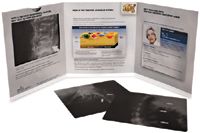
Rx Club Silver
CATEGORY Consumer/DTC » TITLE Spiriva Elephant Campaign » AGENCY Draftfcb Healthcare » CLIENT Boehringer Ingelheim » CREATIVE DIRECTOR: COPY Auge Reichenberg, Rich Levy » ART DIRECTOR John Palisay » COPYWRITER Tom McLoughlin

Rx Club Silver
CATEGORY Posters/Special Projects » TITLE Rx Club Show Poster » AGENCY Draftfcb Healthcare » CLIENT The Rx Club Show » CREATIVE DIRECTOR: COPY Rich Levy » ART DIRECTOR Susan Grillo » COPYWRITER Ed Serken
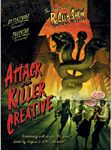
Rx Club Silver
CATEGORY Magazine Advertising » TITLE Nuvigil Proud Sponsor » AGENCY Draftfcb Healthcare » CLIENT Cephalon » CREATIVE DIRECTOR: ART Don Matera » CREATIVE DIRECTOR: COPY Susan Perlbachs » ART DIRECTOR Ray Colon » COPYWRITER Joe Riippi

Rx Club Silver
CATEGORY Posters/Special Projects » TITLE Rx Club Show 25th Anniversary Poster » AGENCY dudnyk » CLIENT The Rx Club Show » CREATIVE DIRECTOR: ART John Kemble » CREATIVE DIRECTOR: COPY Laurie Bartolomeo » ART DIRECTOR Mike Hawkins » COPYWRITER Melissa Markowitz

Rx Club Silver
CATEGORY Best Animation » TITLE Long Live Bones » AGENCY Golden Mean » CLIENT Cipla » CREATIVE DIRECTOR: ART P. S. Nanekar » CREATIVE DIRECTOR: COPY Deepak Nanekar » ART DIRECTOR Asmita Nanekar » COPYWRITER Deepak Nanekar

Rx Club Silver
CATEGORY Magazine Advertising » TITLE Taming the Beast » AGENCY GSW Worldwide » CLIENT Eli Lilly » CREATIVE DIRECTOR: ART Rod Smith » CREATIVE DIRECTOR: COPY Kelly Seymour » ART DIRECTOR Scott Morris » COPYWRITER Lars Larsen

Rx Club Silver
CATEGORY Education » TITLE A Dry Story » AGENCY HC BCN » CLIENT Alcon » CREATIVE DIRECTOR: ART Manu Croissier » ART DIRECTOR Laura Navarro » COPYWRITER Montse Bernardo

Rx Club Silver
CATEGORY OTC » TITLE Owl » AGENCY HC BCN » CLIENT Boehringer Ingelheim » CREATIVE DIRECTOR: ART Manu Croissier » ART DIRECTOR David Miro » COPYWRITER Manu Croissier

Rx Club Silver
CATEGORY CONSUMER/DTC » TITLE Vaser It Consumer Campaign » AGENCY HCB Health » CLIENT Sound Surgical Technologies » CREATIVE DIRECTOR: ART Michele Evans » CREATIVE DIRECTOR: COPY Anne Pratt

Rx Club Silver
CATEGORY Best Consumer Website » TITLE Virtual Patient Concierge » AGENCY Indegene Lifesystems » CLIENT Novartis » CREATIVE DIRECTOR: ART Allen Levinson » CREATIVE DIRECTOR: COPY Harsha Arumugam » ART DIRECTOR Allen Levinson » COPYWRITER Lance Gentile

Rx Club Silver
CATEGORY Integrated Campaign » TITLE Sativex—Small Victories » AGENCY Langland » CLIENT Bayer » CREATIVE DIRECTOR: ART Andrew Spurgeon » ART DIRECTOR Bryce Groves » COPYWRITER Harry Yeates

Rx Club Silver
CATEGORY Integrated Campaign » TITLE Easyhaler—A Little Less Different » AGENCY Langland » CLIENT Orion Pharma » CREATIVE DIRECTOR: ART Andrew Spurgeon » ART DIRECTOR Andrew Morley, Mark Carolan » COPYWRITER Andrew Spurgeon, Sue Blitz

Rx Club Silver
CATEGORY Kiosks » TITLE AmBisome Stand » AGENCY Langland » CLIENT Gilead » CREATIVE DIRECTOR: ART Andrew Spurgeon » ART DIRECTOR Andy Barnard » COPYWRITER Sue Blitz

Rx Club Silver
CATEGORY Animal Health » TITLE Hey, Gorgeous! » AGENCY McCann Healthcare Mumbai » CLIENT PETA » CREATIVE DIRECTOR: ART Sanjay Kudale » CREATIVE DIRECTOR: COPY P.K. Anil » ART DIRECTOR Amit Chavant » COPYWRITER Deepa Bala

Rx Club Silver
CATEGORY Agency Self Promotion » TITLE McCann Can » AGENCY McCann Healthcare Australia » CLIENT McCann Healthcare » CREATIVE DIRECTOR: COPY June Laffey » ART DIRECTOR Kate Chisnall » COPYWRITER June Laffey

Rx Club Silver
CATEGORY Education » TITLE Sparky's Tail » AGENCY Nitrogen » CLIENT MSD Oncology » CREATIVE DIRECTOR: ART Charles Gumbs » ART DIRECTOR Trevor Bartlett » COPYWRITER Sarah White

Rx Club Silver
CATEGORY Education » TITLE Tysabri 9-Hole Peg Test » AGENCY Nitrogen » CLIENT Biogen Idec » CREATIVE DIRECTOR: ART Martin Gaul » ART DIRECTOR Mike Court » COPYWRITER Karen Lacey

Rx Club Silver
CATEGORY OTC » TITLE Benefiber: Fits Right In » AGENCY Ogilvy CommonHealth Worldwide » CLIENT Novartis » CREATIVE DIRECTOR: ART Tina McGill » ART DIRECTOR Evelina Treciak, Heather Canova » COPYWRITER Brook Positan, Rene Wentworth

Rx Club Silver
CATEGORY Sales Promotion » TITLE What Could One Point Mean? » AGENCY Pacific Communications » CLIENT Allergan » CREATIVE DIRECTOR: ART Peter Siegel » CREATIVE DIRECTOR: COPY Peter Allen » ART DIRECTOR Danny D'Agostino » COPYWRITER Peter Allen, Dan Creedon

Rx Club Silver
CATEGORY Public Service Announcements » TITLE Tree » AGENCY Publicis Life Brands Watermelon » CLIENT Piramal Healthcare » CREATIVE DIRECTOR: ART Parag Ramnath » ART DIRECTOR Mahendra Khairnar » COPYWRITER Ashesh Mallick

Rx Club Silver
CATEGORY Animation » TITLE Innovation Begins With Biology » AGENCY Random42 Medical Animation » CLIENT Amgen Oncology » CREATIVE DIRECTOR: ART Hugo Paice » CREATIVE DIRECTOR: COPY Ben Ramsbottom » ART DIRECTOR Matt Sugars

Rx Club Silver
CATEGORY 25 Years of Healthcare Advertising » TITLE Faster Than Fast » AGENCY Wishbone » CLIENT MedPointe » CREATIVE DIRECTOR: ART Mark McDowell » CREATIVE DIRECTOR: COPY Stephanie Sorine » ART DIRECTOR Mark McDowell
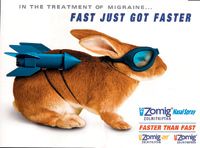
Rx Club Silver
CATEGORY Consumer/DTC » TITLE Things That You Love Bicycle » AGENCY Saatchi & Saatchi Wellness » CLIENT Abbott Laboratories » CREATIVE DIRECTOR: ART Stuart Fink » ART DIRECTOR Yasmine Hamdy » COPYWRITER Seth Hill

Rx Club Silver
CATEGORY Direct Mail » TITLE Fluzone Intradermal Dimensional Mailer » AGENCY Saatchi & Saatchi Healthcare Innovations » CLIENT Sanofi Pasteur » CREATIVE DIRECTOR: ART Tina Fascetti » CREATIVE DIRECTOR: COPY Michelle Casciola » ART DIRECTOR Josh Tumelty, Gayle Macdonell » COPYWRITER Joshua Talmud
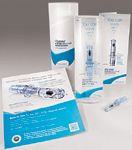
Rx Club Silver
CATEGORY P.O.P. Poster » TITLE Nailcutter » AGENCY DDB Health & Lifestyle » CLIENT Novartis » CREATIVE DIRECTOR: COPY Rajeev Raja, Ipsita Ghosh » ART DIRECTOR Amit Sonar » COPYWRITER Rojhit Mukherjee

Rx Club Silver
CATEGORY Public Service Announcement » TITLE Don't Be What You Drink » AGENCY StoneArch Creative » CLIENT Minnesota Department of Public Safety » CREATIVE DIRECTOR: COPY Sandy Tollefson » ART DIRECTOR Chris Mangold » COPYWRITER Cathy Gasiorowicz

Rx Club Silver
CATEGORY Magazine Advertising » TITLE Protecting From Toxicity » AGENCY Sudler & Hennessey Milan » CLIENT Bayer » CREATIVE DIRECTOR: ART Bruno Stucchi » CREATIVE DIRECTOR: COPY Angelo Ghidotti » ART DIRECTOR Sinead Murphy » COPYWRITER Mair Dilworth
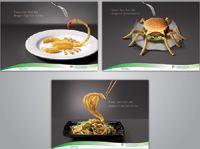
Rx Club Silver
CATEGORY Animation » TITLE PSP Scale » AGENCY Torre Lazur McCann London » CLIENT Janssen » CREATIVE DIRECTOR: ART Adrian Parr » CREATIVE DIRECTOR: COPY Jonathan Moore » ART DIRECTOR Steven Woodliffe » COPYWRITER Jonathan Moore

Rx Club Silver
CATEGORY Best Web Advertising » TITLE The Wall of Survivorship » AGENCY Saatchi Wellness » CLIENT Sanofi-Aventis » CREATIVE DIRECTOR: ART John Sexton » CREATIVE DIRECTOR: COPY Kim Olson » ART DIRECTOR Heath Bodell » COPYWRITER Wythe Marschall

Rx Club Silver

Addressing Disparities in Psoriasis Trials: Takeda's Strategies for Inclusivity in Clinical Research
April 14th 2025LaShell Robinson, Head of Global Feasibility and Trial Equity at Takeda, speaks about the company's strategies to engage patients in underrepresented populations in its phase III psoriasis trials.
Beyond the Prescription: Pharma's Role in Digital Health Conversations
April 1st 2025Join us for an insightful conversation with Jennifer Harakal, Head of Regulatory Affairs at Canopy Life Sciences, as we unpack the evolving intersection of social media and healthcare decisions. Discover how pharmaceutical companies can navigate regulatory challenges while meaningfully engaging with consumers in digital spaces. Jennifer shares expert strategies for responsible marketing, working with influencers, and creating educational content that bridges the gap between patients and healthcare providers. A must-listen for pharma marketers looking to build trust and compliance in today's social media landscape.